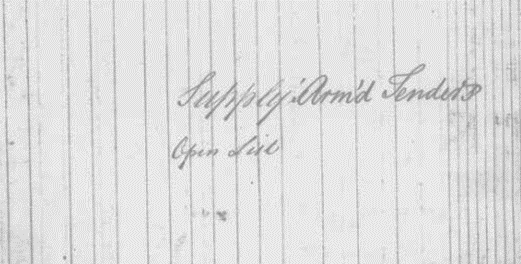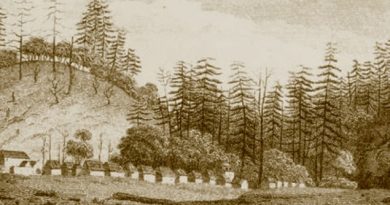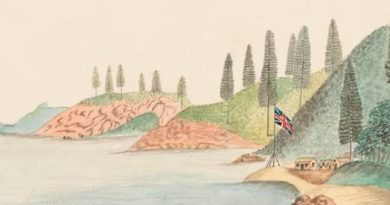HMAT Supply vs HMS Supply
The 79-foot brig-rigged sloop, of 175 tons, His Majesty’s Armed Tender (HMAT) Supply, was a Royal Navy vessel which arrived, as vanguard of the First Fleet, at Botany Bay on 18 Jan 1788.
Yes … HMAT ….. so why are academic institutions, authors, family historians and others still today referring to the vessel as HMS. The answer appears to be simple but systemic confusion. Some reasons have been suggested with confusion, arising from the arrival, in 1795, of (the real) HMS Supply, under the command of Lt. William Kent, as a REPLACEMENT for HMAT Supply and confusion created by the naval designation of Australia’s WWI troop transports which were named HMAT (His Majesty’s Australian Transport). The Logs and Musters of the vessel clearly identify her as Supply Armed Tender …. NOT HMS (His Majesty’s Ship).
One may ask “why does it matter”? Not only is this lack of distinction simply wrong, but it does disservice to both vessels, equally deserving recognition for their diverse contributions to Australia’s Foundation History.
We refer also to the various journals kept by the professional naval officers of the First Fleet, who above all others would have been bound by the naval nomenclature of the 1780s, commencing with no less an authority than Captain Arthur Phillip, of the Navy, Governor and Commander in Chief of the territory of New South Wales, and of His Majesty’s ships and vessels employed on that coast, whose journal preamble includes a description of the fleet, led by : His Majesty’s ship Sirius, Captain Arthur Phillip. (&) Captain John Hunter and His Majesty’s armed tender Supply, Lieutenant H. L. Ball.
Contemporary writings of Captain John Hunter, Lt. William. Bradley, seaman Jacob Nagle, Midshipman Southwell, Surgeons White & Bowes Smyth and Captain David Collins colloquially refer to the Supply as simply the Supply or armed tender, H.M brigg, brig, or tender (never His Majesty’s Ship). The 1792 – 1796 Norfolk Island Victualling Book also refers to Supply exclusively as His Majesty’s Armed Tender.
Naval Lieutenant P G King (future Governor) during his first command of Norfolk Island, assiduously referred to the Supply as His Majesty’s Armed Tender, evidenced below (among a dozen entries, including his description of the arrival of Sirius and Supply on the fateful voyage of the loss of Sirius):
Thursday 3rd [December, 1789] … SSW Do Fresh Breezes & pleasant Weather at Daylight perceived His Majesties Armed Tender Supply at 8…
Friday 29 [January, 1790] … Bad Landing Moderate Breezes & Cloudy Weather. at day light perceived His Majesties Armed Tender Supply in the Road….
Saturday 13th [March, 1790] … S W Very Bad Landing…… at day light perceived His Majesties Ship Sirius & Supply armed Tender in the Offing at 10 Received the despatches from Ball Bay…..
[Nov 1791] …“the same day the Queen transport arrived, with the remainder of Capt Paterson’s company, some convicts & a seaman who was discharged from the Supply armed tender, to become a settler (Journal of Philip Gidley King 1791 – 1796, NLA, MS 70: 1).
A thank you to historian Jonathan Heppell who revisited these concerns with the Fellowship of First Fleet Fleeters as acknowledged in their 2020 Founders (magazine) Volume 51 Issue 04. Similarly, the premise has, at the time of writing, been endorsed and applied by the State Library of NSW, Australian National Maritime Museum, Powerhouse Museum, Australian National University and the recently amalgamated Museums of History NSW (which now includes State Records of NSW).
When Australia Post published the Maritime Models stamps in 2021. they correctly used HMAT Supply.
Australian History Research has published the following on some of the HMAT Supply early colonial voyages: Norfolk Island landing party 6 March 1788 HMAT Supply – People of HM Supply to Norfolk Island March 1789 – Our New Home: HM Supply Norfolk Island Dec 1789 and Jan 1790 – HMAT Supply Norfolk Island March 1790.
So here we are in 2025, 237 years after the arrival of HMAT Supply with the other ships of the First Fleet, and with unprecedented access to digitisation of these original sources. It is surely time for all to review their writing (online & otherwise) static displays and research, and identify the Supply as HMAT Supply (in NSW and Norfolk Island waters 1788 – 1791) and not to perpetuate the errors, assumptions and confusion of earlier chroniclers by using HMS Supply.
Almost universal misinformation, which needs to be understood to be challenged. The evolution of the corruption follows (we thank historian Jon Heppell for this research and list):
The Supply Transport (175 tons) was built in 1759 and in 1786 was fitted as an Armed Tender [HMAT] for Botany Bay. During the voyage she did what Tenders do, shepherding the fleet stragglers, running the errands, attending the flagship. She was favoured by the Commodore to be first into both Botany Bay and Port Jackson, and the only vessel in Sydney Cove to witness the flag raising and King’s toast of 26 January.
During her service in the Colony, (1788~1791) HMAT Supply was formally, in all [extant] official documents, referred to as His Majesty’s Armed Tender Supply . Colloquially, at the time, she was variously described as HM Brig Supply, Supply armed tender, Supply brig or simply the Supply. Ships’ name initials were not commonly used at the time.
After many support journeys to Norfolk Island, and the tragic loss there of HMS Sirius, HMAT Supply became the lifeline of the colony, voyaging thousands of miles in unfamiliar seas to Batavia for urgent supplies. Battered and bruised beyond local repair, she returned to the UK in 1791.
New Brunswick (388 tons) was an American vessel purchased by the Admiralty in 1793 and fitted out as HMS Supply, being sent to Port Jackson in 1795, under the command of William Kent (Lieut. RN), to replace HMAT Supply. It was only after the arrival of this less recognised replacement HMS Supply, that the description HMS became relevant, albeit for a different vessel.
In Charles White’s Early Australian History (1889) the ship was exclusively identified as the ‘Supply, armed tender’, armed brig, the ‘Supply,’ and ‘the tender Supply ‘. White got it right. In May 1910, the Australian Pioneers’ Club was formed in Sydney, to perpetuate early incidents in Australian history, including the history of the First Fleet, and the proclamation of the Colony. The prime mover, foundation Secretary and some time President was Mr. Douglas Hope Johnston MA. FR Hist S. a barrister, of Trinity Hall, Cambridge and the Inner Temple London. (a New Zealand born descendant of Lt George Johnston, ADC to Governor Phillip and later of Rum Rebellion infamy).
In 1912 the Library Committee of the Commonwealth Parliament commissioned the 33 volume Historical Records of Australia (HRA). In 1914 confusion over the two Supply(s) was first evidenced in this official record (but detected, acknowledged and duly corrected) in the Index of the HRA; Series 1; Vol 1 [errata]. In the early 1920s plans and commentary were obtained (by Mr. Douglas Hope Johnston) from the British Admiralty which identified Supply initially as Supply Transport, but latterly as Armed Tender Supply.
By the mid 1920s those plans and commentary were widely distributed. Mr Johnston, a successful and influential man who moved comfortably both in the world of high society and within the halls of power, and as a Fellow of the The Royal Historical Society, had established a reputation as the go to expert on matters of the First Fleet. His pronouncements were clearly unquestioned. Unfortunately, HMAT was now HMS, and apparently, accepted. By 1927 the Sydney Morning Herald was regularly referring to Supply as HMS Supply [sic] often quoting Mr. D H Johnston as the authority. This was followed into the 1930s by many mistaken references to HMAT Supply as HMS Supply, the source of data & plans often attributed to Mr. D H Johnston, in the Australian and British news media, culminating in these outcomes…
Widely celebrated publication of a painting of HMS Supply [sic] by prominent artist John Allcot, at the behest of Mr Douglas Hope Johnston, who supplied the plans & data &c. 1923-1929. One such work still hangs in London’s Tate Gallery.
The aforesaid corrupted plans and commentary had been widely distributed, with the compliments of Mr Johnston, critically to authorities and institutions planning significant celebratory events.
UK Press buildup and reporting of the dedication by HRH Prince George in December 1932, attended by London’s most senior dignitaries, of the Admiral Arthur Phillip Memorial in London, which was capped by a detailed gilded sculpture erroneously entitled HMS Supply. The credit for both the monument, and the information, awarded to Mr Douglas Hope Johnston, was enshrined in a brass plaque second only to that of the Arthur Phillip dedication.
The Sesquicentenary celebrations of 26 January 1938 in Sydney, prominently featuring both a full sized replica (based on the lighter Bramble) and a 1:24 scale model of the Supply, (constructed by Lt. Commander Geoffrey Ingleton RAN (Ret.), a leading naval historian) identified throughout the media as HMS [sic] from data supplied by D H Johnston, and witnessed by many tens of thousands of Sydney’s citizens.
Mr. Douglas Hope Johnston was a major participant in all of these developments. Passionate as he was about the preservation and perpetuation of Australia’s foundation history, he would surely have been mortified, had he realised, at what would seem a minor error in the “bottom line” of the Supply story, which unintentionally but inevitably led to the near extinction of HMAT Supply‘s true identity.



